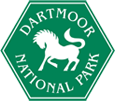Basic factsheets
Dartmoor National park is 368 square miles or 954 square kilometres. It’s about 20 miles from North to South and 20 miles from East to West.
National Parks were created by The National Parks and Access to the Countryside Act 1949. Dartmoor National Park is created from land owned by a range of people including lots of farmers and The Duchy of Cornwall (Prince William). Some of the land, including Haytor, belongs to Dartmoor National Park Authority.
The highest point on Dartmoor is High Willhays. It’s 621 metres or 2,039 feet above sea level.
The lowest point on Dartmoor is Doghole Bridge. It’s 30 metres or 98 feet above sea level.
65% of Dartmoor is made of granite – rock which was created around 295 million years ago.
There are over 365 tors on Dartmoor. Tors are where the granite rock that is underneath Dartmoor shows through.
There are three visitor centres at Dartmoor, one at Princetown, one at Haytor and one at Postbridge.
34,500 people live on Dartmoor.
Today about 90% of the land on Dartmoor is used for farming. Farmers keep 50,000 cows, sheep and ponies on Dartmoor.
The ponies on Dartmoor aren’t wild animals. They all belong to farmers. Many years ago they were used to transport things like food, wool and tin across the moor or they worked in the mines.
There is a prison on Dartmoor. HMP Princetown opened in 1809 and is still a working prison today.
There are places on Dartmoor where you can see the remains of villages where people lived and worked in the Bronze Age, 4,500 years ago.
Several rivers start on Dartmoor, including the Dart and the Teign. They start out very small, but grow quickly. Rivers on Dartmoor have otters and salmon living in them.
Some parts of Dartmoor are covered in old forests. There are oak trees on Dartmoor that are hundreds of years old.
To find out more about Dartmoor have a look at the Primary factsheets:
(please note there is an error on our Introduction to Dartmoor fact sheets which states that Dartmoor is the size of 20,000 football pitches- it is closer to 133,000 football pitches. We will get the fact sheets updated shortly)
